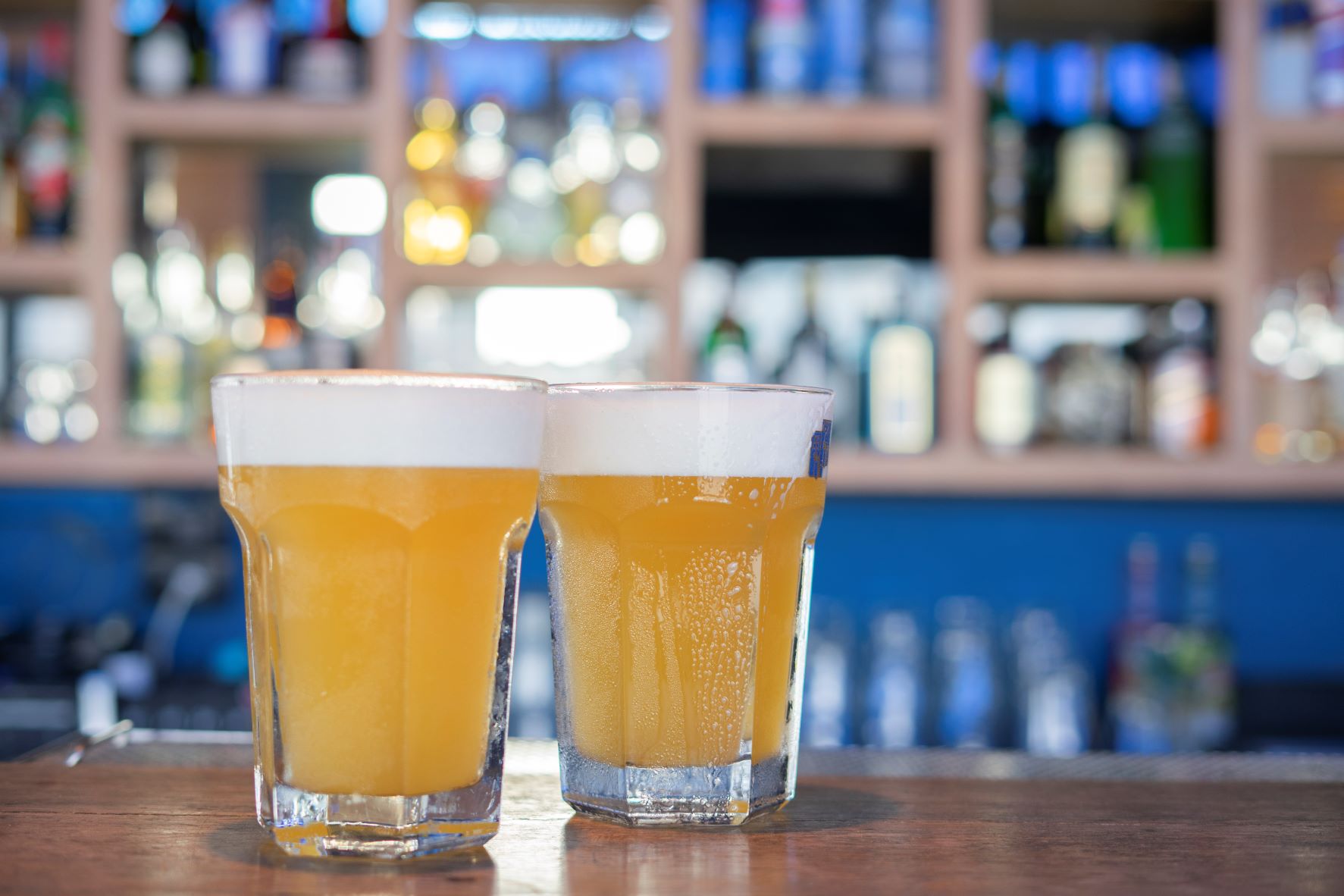The White Beers that Possibly Started the Haze Craze

When someone orders a hazy beer these days they are typically asking for one of those fruity New England style hazy IPAs. This was not the case 10 or 15 years ago when most “hazy” beers were Belgian influenced witbiers, cloudy white with protein due to the use of unmalted wheat.
I would argue that Molson’s Rickards White opened the eyes of many mainstream beer drinkers to the fact that cloudy beers are not necessarily spoiled (although they could be). While Rickards was a rather commercial and sweetish interpretation of the classic Belgian Wit defined by Hoegaarden, it arguably made hazy beer acceptable to folks who normally avoided flavourful, colourful beer made by small producers.
Witbier, or Blanche, has a history that goes back to the wheat growing part of Brabant, east of Brussels, where the monastery town of Hoegaarden had its own Guild of Brewers in the 1500s. There were 30 breweries making “white” beer based on unmalted wheat by the 1800s, although it is not known when they first started adding Curaçao orange peel, coriander seed and other spices. By the 1960s, though, they had essentially disappeared, but Pierre Celis brought back the style at his De Kluis brewery and started a new trend. He was eventually bought out by Interbrew, but his recipe still exists as Hoegaarden. Nowadays many small breweries make witbiers in this style, or variations on it.
Hoegaarden – Belgium, 4.9% abv, Part of AB Inbev group
“The Original” pours somewhat hazy, is a pale yellowy-whitish colour, forms a nice creamy, somewhat rocky head but it doesn’t hold that well. Aromatics are citrussy, like lemon, and a bit spicy, perfumed, floral. Palate is light to medium bodied, fresh, clean, citrussy, with low bitterness, but finishing dry. Very nice acidity underpins this perfect summer quenching ale. Uses Curaçao Orange peel for bitterness and coriander seed for that citrus flavour. Some bars serve it with a lemon slice, including in Belgium and the Netherlands, but I prefer it without. It has plenty of citrus character without adding an actual slice.
Belgian Moon Blanche Belge, Belgian White, 5.4% abv, Molson Coors
Pours a bit thicker and with a more orange colour than Hoegaarden. Head is less white and less creamy. Aroma is mostly coriander seed, which is a mix of citrus and exotic spice. Tastes more like orange flavoured beer than a true witbier, but has ok balance and a smooth finish. Easy to drink.
Uses Valencia orange peel and coriander seed. Originally called Blue Moon in the USA, it has often been said that this is the same beer as Rickard’s White, but Molson explains that there are some different ingredients and a different sweetness level. They recommend serving it with an orange slice, but I recommend just drinking it.
Picaroons Dooryard Summer Wheat Ale, NB, 4.5% abv
While not a Belgian witbier, since this is brewed with Picaroons’ regular Ringwood yeast, they do add coriander and orange peel, similar to what they do for Belgian wit. This is not nearly as hazy as the others, and is golden in colour, with a whitish head. You can smell some coriander, but the citrus is subtle. There is more of a spice effect from either the yeast, or perhaps hops. There is a hint of sourness, perhaps partly from the wheat, but not at the level of a typical Belgian wit.
Unibroue Orange Sanguine Wit, Quebec, 5.5% abv
Unibroue was the first Canadian brewery to accurately duplicate the classic Belgian wit with their excellent Blanche De Chambly. This is a variation on the style, with more orange colour and flavour, and even more exotic notes. It is quite delicious, but not as fresh and crisp as their regular Blanche.
